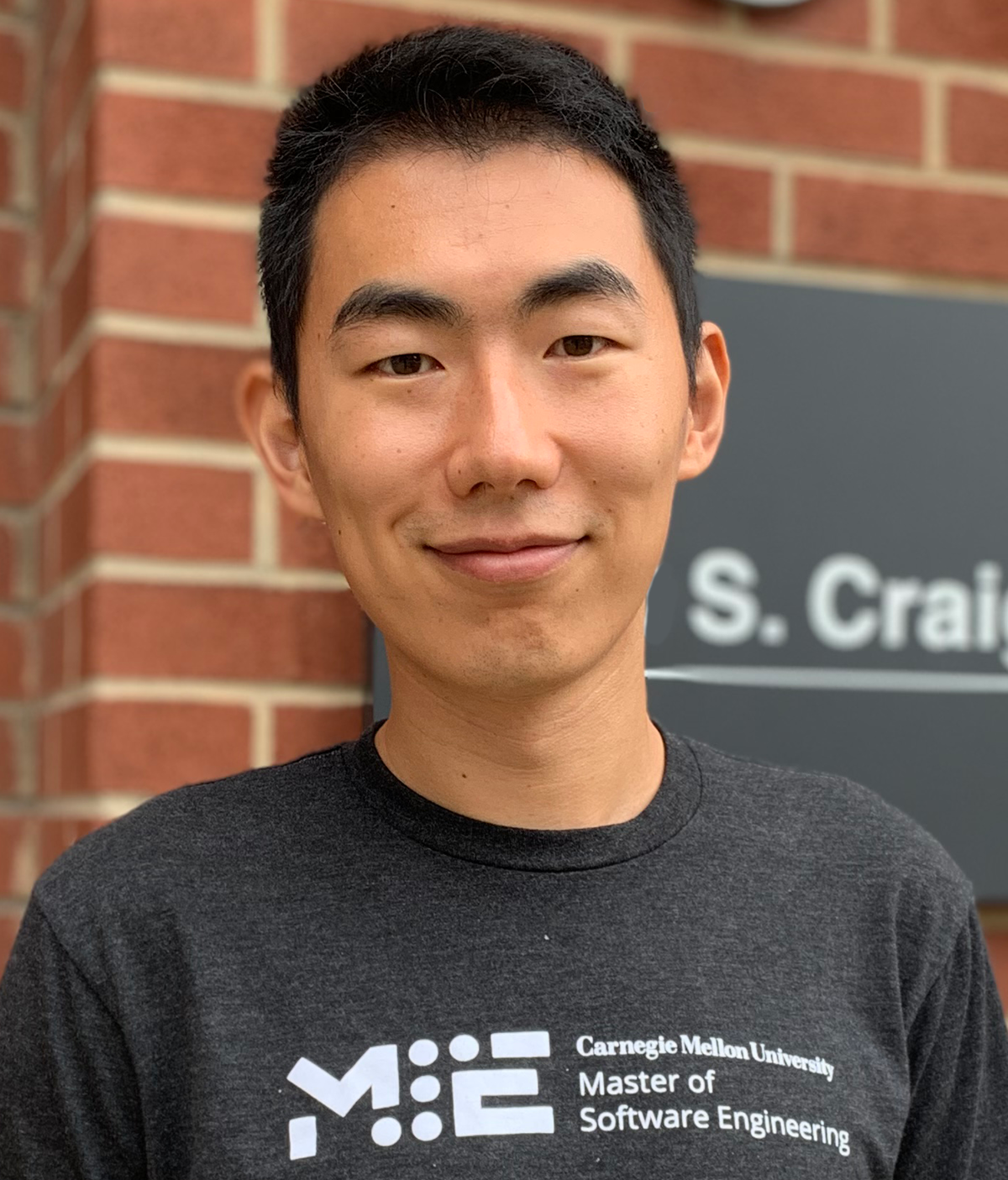James E. Tomayko Scholarship Winner | Jinglun Ding
By the time Jinglun Ding graduates in December of this year, he will have not one, but two lunar rover projects on his resume. Following where his curiosity and interests lead, he jumped at the chance to work on the IRIS rover, a shoebox sized robot heading to the moon later this year. “In hindsight, it might not have been the best decision,” to take on a side project during the first semester of the program. “At the time I thought I would have more free time — but it turns out the CMU workload is really intense — and how often do you have the chance to work on a space project?”
This being CMU, the chances are pretty good! The next semester he was assigned to the Moonshot team for his capstone studio project. The team is tasked with furthering the design and implementation of the mission control software to command and manage the MoonRanger robot.
Prior to entering the MSE, Jinglun was employed as a Full Stack Software Developer at Crum & Forster, where he found himself acting as the informal lead of a small team of developers. “The team was growing and I was starting to have to manage interns and introduce new team members to the project. A lot of the time it felt a bit chaotic. I knew how to program, and had a vision of how to make the project work, but didn’t have the skills to organize the whole team to work towards a shared goal. I realized I could continue to learn how to lead the hard way, by trial and error on the job,” or he could go back to school. “I knew I wanted a practical program; the MSE was the obvious choice.”
But Jinglun’s path was not as linear and straightforward as one might expect upon first glance. After three years of working as a software developer he realized he wanted a change, but wasn’t sure which direction to take. “It was a hard time,” he admits. With a bachelor’s degree in computer science, and minors in visual communication and graphic design, there were multiple paths to explore. He applied to, and was accepted to both Parsons School of Design and the Interactive Telecommunication Program (ITP) at NYU TISCH School for the Arts. In addition, he considered the masters programs offered by the HCII. “Art is one of my passions, but I was not sure if I wanted to pursue it as a form of employment. Eventually, I decided to take my career as a software engineer to the next level.”
That does not mean, however, that he has put aside art for software. Jinglun recognizes that his passions are not mutually exclusive. In fact, he has a number of ideas of how he can use art to explore technology, and inversely, use technology to explore art.
In June of 2020, prior to entering the MSE program, Jinglun attended the NYU TISCH ITP Summer Camp program. It was at this immersive, month-long combination crash course/playground where creative and techy people rub shoulders that he was exposed to many artists who are also programmers, as well as artists who don’t know how to program but want to learn how to program. This led him to reflect upon his experiences and ask, “Is there a way we can create a language, or a tool, for artists who — or for anyone, really — who want to develop a software product but don’t know how to code. There are already examples of that type of tool. NYU developed p5.js and Google has TeachableMachine. That’s just one example of the type of project I’d like to eventually work on.”
A few months later he was able to explore another interest, AI and the implications of online privacy, when he enrolled in Software Engineering for AI-Enabled Systems with Christian Kästner in the Fall 2020 semester. “I was interested in the issue of online privacy while developing software at Crum & Forster, but the true influence came from side interests and talking with other software engineers on the issue of online privacy.” In Professor Kästner’s course, “we had many really interesting discussions about ethics and fairness of the AI that made me rethink my responsibility as a software engineer to understand the ethical impact when developing AI systems.”
While it is true that few people follow a truly linear path, what sets Jinglun apart is his willingness to explore areas that interest him. Those areas may not readily appear to contribute directly to a specific career outcome, but have the potential to add an unexpected richness to his experience. Jinglun says it best on his Instagram feed: “Starting from here but to where?”
